Notes Toward a New Language: Silence: On Tacita Dean
BY Cynthia Cruz
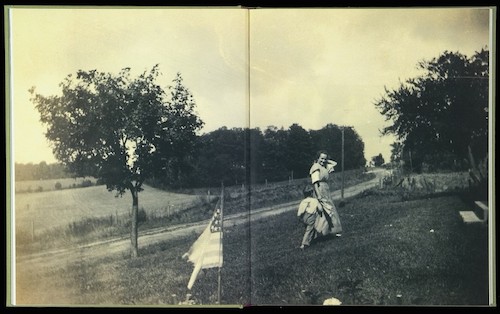
Tacita Dean is a filmmaker and photographer; she also makes drawings, installations and audio work. Dean’s work is steeped in silence and her work, a study of silence, of what is not said, of the remainder, of the spaces or holes between experience that cannot be fully articulated by language:
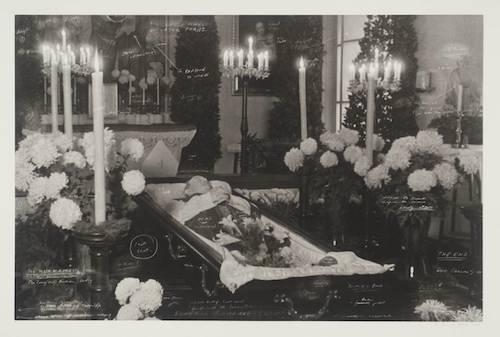
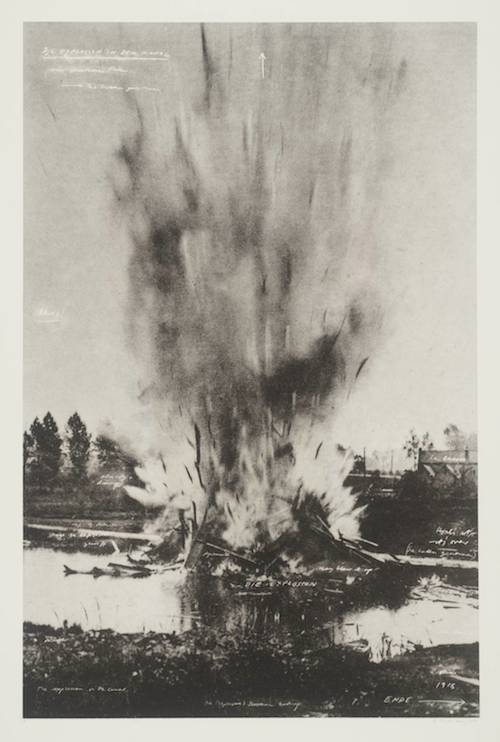
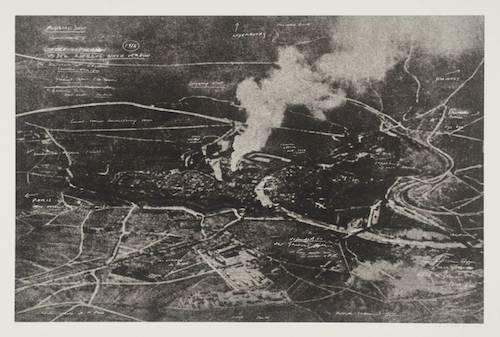
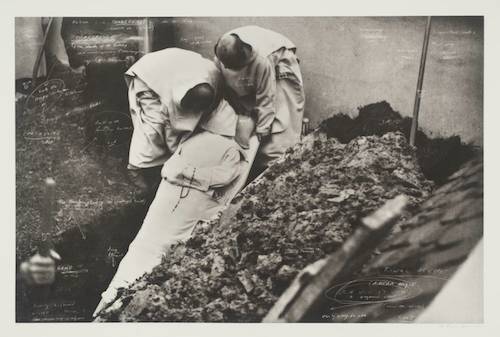
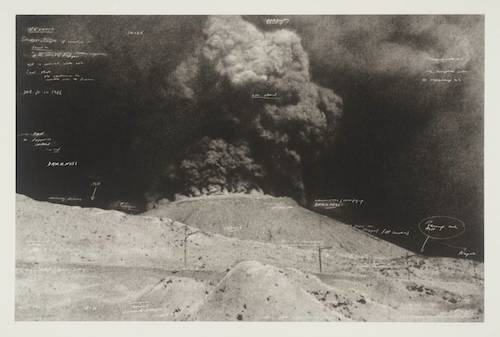
The above works belong to a larger portfolio titled "The Russian Ending." The series consists of twenty postcards Dean found at European flea markets. According to the Tate Museum, where these works are exhibited:
Most of the images depict accidents and disasters, both man-made and natural. Superimposed on each image are white handwritten notes in the style of film directions with instructions for lighting, sound and camera movements, suggesting that the each picture is the working note for a film. The title of the series is taken from a convention in the early years of the Danish film industry when each film was produced in two versions, one with a happy ending for the American market, the other with a tragic ending for Russian audiences. Dean’s interventions encourage viewers to formulate narratives leading up to the tragic denouements in the prints, engaging and implicating the audience in the creative process.
By using found postcards which are essentially moments captured forever in one image or still, and then etching directions on the card as though the image were one still of a larger film, Dean frames and then reframes the moment. It is as if she is showing us death: the moment captured in the image was gone as soon as the photographer caught it inside the camera. The moment was lost forever, captured only through film. By using only postcards found at various European flea markets, Dean is reiterating the loss (the cards are being sold, presumably in an old tin or on a fold out table among many other such images) and then the recapturing that occurs when she found the postcard and bought it. By using the image as her image in her artwork, the image, the moment, the postcard is framed and reframed, again. And, finally, by etching the film directions onto the image, she is bringing that moment back to life.
In 2011 the New Yorker ran a feature on Dean, a beautiful portfolio of the artist by Emily Eakin:
In the essay, Eakin wrote of Dean:
Dean is known primarily as a maker of films, but she studied drawing in art school, and her films resemble drawings or paintings. Not much happens. There is typically no narration or score, though often there is ambient sound. There is no fancy lighting or camerawork—no zooms or pans. (“I like things to happen within the frame,” she has said. “I prefer to wait for it.”) Dean’s camera, affixed to a tripod, gazes impassively at its subjects—decaying buildings; boats, lighthouses, and seascapes; and, lately, artists, among them Claes Oldenburg and Cy Twombly—for minutes on end. She is an anatomist of passing time.
Like her medium, the objects and the people in Dean’s films tend to be outmoded or aging, and her work has an elegiac tone. “All the things I am attracted to are just about to disappear,” she likes to say.
In 2001, Dean made a short film of Hamburger. Michael Hamburger is the German-Jewish translator of the work of Celan, Rilke, Hölderlin, Brecht, and Georg Brüchner's Lenz, among others. Hamburger was a poet as well as a translator. I am most familiar with his work through his translations of Paul Celan:
Dean's gallery (one of her two galleries) Frith Street Gallery wrote the following regarding her film project on Hamburger:
Commissioned to make a work in relation to the writer, W. G. Sebald, Dean took as her subject the poet and translator Michael Hamburger whom Sebald meets in a chapter of his book, The Rings of Saturn. Her 28 minute film, Michael Hamburger (2007) concentrates on Hamburger’s love of apples, and on the orchard he grew himself in his Suffolk garden, mostly from the pips of apples he either found or had been given. The rambling house and its encroaching garden, the sunlight, the rattling wind and then the appearance of a rainbow all act as metaphor to the man as poet.
Hamburger was also, of course, a translator of the work of W.G. Sebald. Dean, an admirer of Sebald's work, included Sebald as one of her "Artist's Choices' in her Phaidon catalogue. She is featured in the film, Patience (After Sebald).
Dean also contributed an essay to the collection, After Sebald: Essays & Illuminations. Her contribution is lovely. Sebaldian, it is both lovely and eerie in how beautifully she is able to invoke his voice:
W. G. Sebald wrote, in an article published in The New Yorker after his death in 2001, about the very strange place that the bombing of German cities has in the collective memory of the people. He writes not only of the extraordinary efficiency and speed with which the rubble was cleared and reconstruction begun, but also of the protective amnesia that settled in after the air raids finally ended. As if, he writes, "the images of this horrifying chapter of our history have never really crossed the threshold of the national consciousness." Most documented observations, he continues, were made by foreign journalists and writers, repulsed at the damage inflicted by them on a civilian population,whereas in Germany itself, there was near silence.
What is this silence and in what ways is it connected to trauma, chaos, and clutter? I have written elsewhere, both in essays and in my most recent collection of poems, Wunderkammer, about just this: how this amnesia, that which the mind can or will not recall, remains untranslatable, its own wild and inexplicable language. What the body recalls the mind may shut its windows of memory to. But we can give it a language, though the language can never be literal or cohesive in any narrative manner. Instead, this type of memory remains inarticulable--and those who attempt to translate these memories into words find themselves faced with silence or its various iterations: stutter, holes, and compulsive repetition. Indeed, unable to articulate the trauma, reverting to these iterations of silence, instead, she may find herself seen as a mute or an idiot.
It isn't, as Duras writes, in the words, per se, though of course each word matters terribly--it is in the structure of the language. And this language must necessarily reflect the ruins, the missing moments and years, the holes by enacting them. When my mind stutters, when it whirs and cannot articulate, years and years of memory singed--this silt and dreg is how I will write, it is the only way I can move nearer to articulating that which can not be properly articulated.
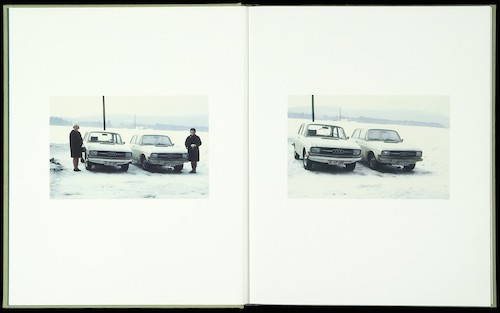
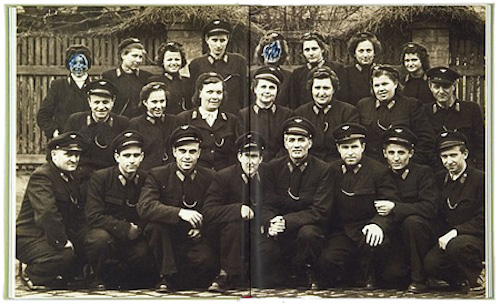
And so it makes absolute sense that Dean works with film and photographs predominantly: the image as well as the still from a film is one stutter, the space between photographs or film stills are the holes, the silence. Like Aby Warburg, Gerhard Ricter's Atlas Project or Hanne Darboven's panels, the presentation of a panel of photographs invokes repetition, which is a language of its own. Repetition is, of course, a form of stutter, a movement that does not necessarily propel one forward. Repetition is its own grammar, it is its own system, or grid. Repetition refuses the lure of newness, of progress--like walking knee-deep in mud. And it is circular, just as the speech of one who is sunk deep in the throes of depression. As Jacques Derrida writes: "We must remember that repetition itself, the logic of repetition, indeed, the repetition compulsion, remains, according to Freud, indissociable from the death drive."
And one can say that the spaces in-between are a kind of death--memory refusing to conjure occurrences it cannot fathom. These spaces, these deaths, are silence.
Cynthia Cruz is a poet, novelist, and nonfiction writer. She is the author of the poetry collections...
Read Full Biography

